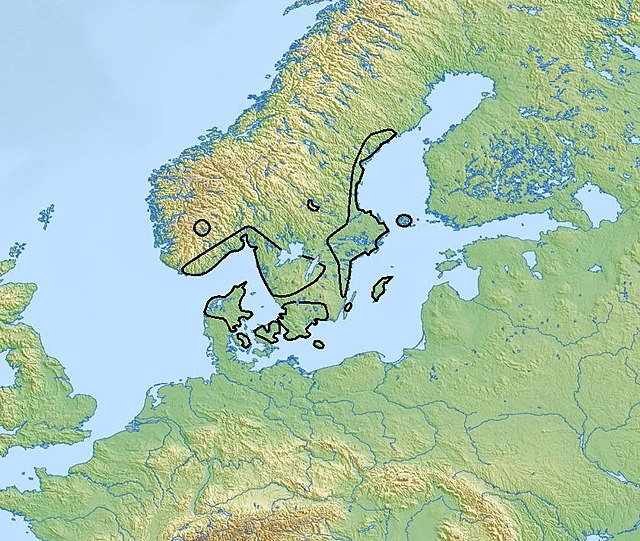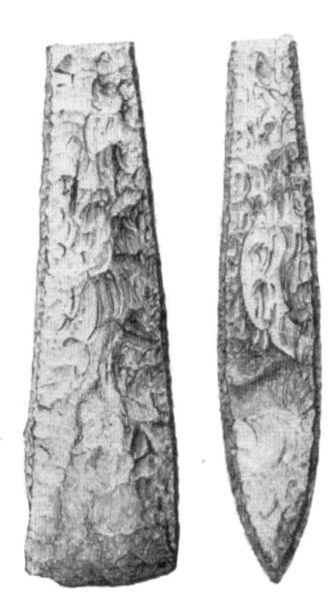The Pitted Ware culture was a hunter-gatherer culture in southern Scandinavia, mainly along the coasts of Svealand, Götaland, Åland, north-eastern Denmark and southern Norway. Despite its Mesolithic economy, it is by convention classed as Neolithic, since it falls within the period in which farming reached Scandinavia. The Pitted Ware people were largely maritime hunters, and were engaged in lively trade with both the agricultural communities of the Scandinavian interior and other hunter-gatherers of the Baltic Sea.
Pitted Ware culture
"Thick-neck axe" from Närke (Sweden), a flintstone axe characteristic of both the Funnelbeaker and the Pitted Ware cultures.
Trindyxa (round stone axe), Gotland, Sweden
A pottery shard showing the characteristic pits, from Uppland, Sweden
Scandinavian Hunter-Gatherer
In archaeogenetics, the term Scandinavian Hunter-Gatherer (SHG) is the name given to a distinct ancestral component that represents descent from Mesolithic hunter-gatherers of Scandinavia. Genetic studies suggest that the SHGs were a mix of Western Hunter-Gatherers (WHGs) initially populating Scandinavia from the south during the Holocene, and Eastern Hunter-Gatherers (EHGs), who later entered Scandinavia from the north along the Norwegian coast. During the Neolithic, they admixed further with Early European Farmers (EEFs) and Western Steppe Herders (WSHs). Genetic continuity has been detected between the SHGs and members of the Pitted Ware culture (PWC), and to a certain degree, between SHGs and modern northern Europeans. The Sámi, on the other hand, have been found to be completely unrelated to the PWC.
Reconstruction of a circa 7,000 BP Scandinavian Hunter-Gatherer by Oscar Nilsson, Trelleborgs Museum.





